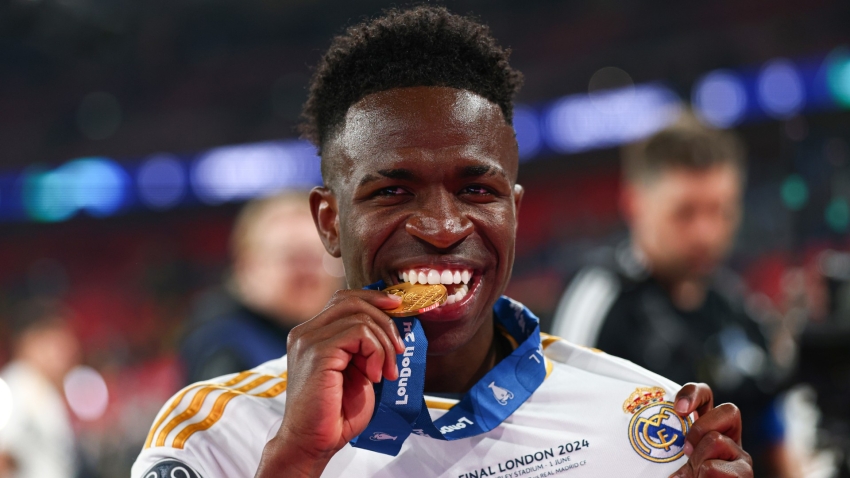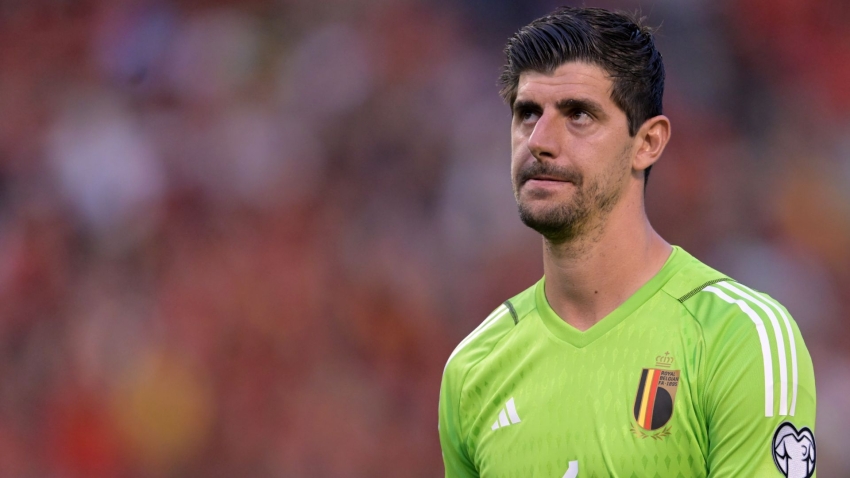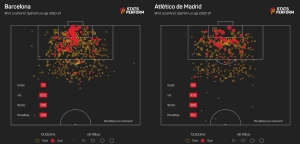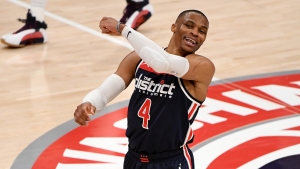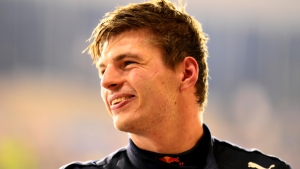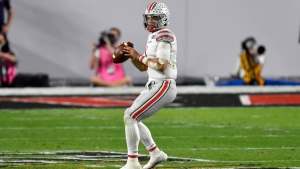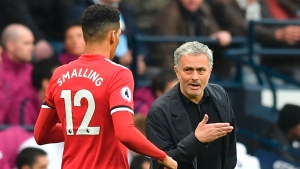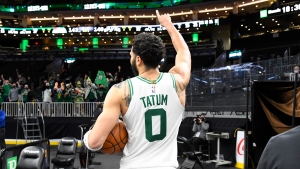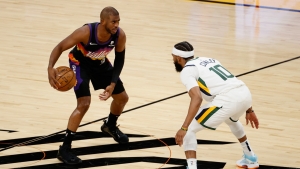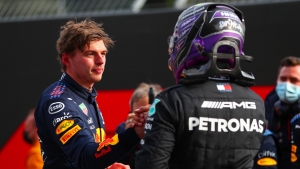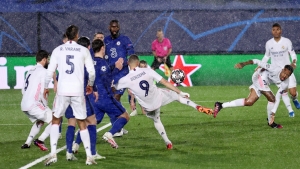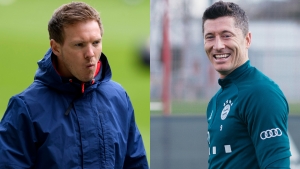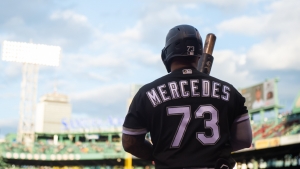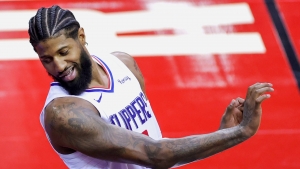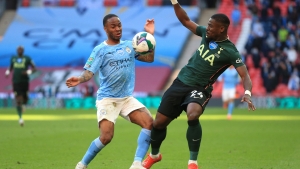Judging draft picks in the immediate aftermath of their selection can be a foolhardy endeavour, as the success of rookies that enter the league depends on several factors including situation, opportunity and luck.
While it is tough to dole out grades for players who have not even hit the practice field for their new teams, it is possible to assess the totality of a franchise's moves in a draft and determine who has been impacted, positively and negatively, by those player selections.
In a draft dominated by a historic level of talent at the position, it is the classes of teams that made changes at quarterback that will likely have the most significant influence on the league.
After five quarterbacks went in the first round, we use Stats Perform data to determine the winners and losers from a draft that should go on to be remembered as one of the most important in NFL history.
Winners
Chicago Bears fans
Who knows whether the Justin Fields-era in Chicago will be a success? The weight of history surrounding Bears quarterbacks suggests it has a very good chance of being a failure.
But by trading up to land the Ohio State quarterback instead of committing to a year of purgatory with Andy Dalton, the Bears ensured they should be significantly more watchable in 2021, assuming post-draft talk about wanting to sit Fields behind Dalton proves false.
Fields is an exciting downfield thrower who averaged 10.10 air yards per attempt in the 2020 college season. It is an imperfect comparison given the difference in the level of competition but the two Bears starters in 2019, Mitchell Trubisky (7.94) and Nick Foles (7.92), each averaged under eight air yards per attempt.
And Fields was accurate when he pushed the ball downfield. On throws of 15 air yards or more, 76.47 per cent were well thrown, compared to 71.43 for Lawrence, 69.41 for Wilson and 67.39 for 15th overall pick Mac Jones.
His aggressive style should mesh well with number one receiver Allen Robinson, who was fifth in the NFL with 908 of his receiving yards coming at the point of reception.
Fields will also have the benefit of improved protection from a nasty offensive tackle in the form of second-round pick Teven Jenkins.
Jenkins allowed a pressure rate of 2.9 per cent in 2020, third among tackles with at least 100 pass protection snaps. The top tackle in that regard was Larry Borom of Missouri (1.8%), whom Chicago drafted in the fifth round.
Chicago also further helped Fields' cause by drafting Virginia Tech running back Khalil Herbert, who was second in the Power 5 in yards per carry (7.63) among running backs with at least 100 carries and Dazz Newsome, the North Carolina wideout who was 11th in burn percentage (71) among receivers with at least 25 slot targets.
The Bears have been a chore to watch in recent years. It isn't clear whether the move up for Fields will work and it is debatable whether general manager Ryan Pace should have been allowed to make it given his track record, but there is finally reason for a passionate fanbase to be genuinely excited about their team.
Zach Wilson
Wilson going second overall to the Jets was no secret, but New York did an excellent job of taking steps to ensure concerns over his one season of elite production against non-Power 5 opposition do not prove prescient by surrounding him with talent.
A trade up for guard Alijah Vera-Tucker raised eyebrows but his pressure rate allowed of 1.3 per cent when playing left guard for USC in 2019 was the best in the Power 5 and suggests he can lock down that spot for the next decade for the Jets.
Wide receiver Elijah Moore brings inside-out versatility and should have gone in the first round. Instead, the Ole Miss star went 34th overall to the Jets, adding a wideout who led the FBS in receiving yards per game (149.1) last season to an intriguing group that includes Denzel Mims, Corey Davis and Jamison Crowder.
Third-round running back Michael Carter will give offensive coordinator Mike LaFleur a versatile skill set to utilise.
The North Carolina back led Power 5 runners with 100 carries or more in yards per carry (7.98) and yards before contact per rush (5.36) in 2020.
As a receiver, Carter was eighth among those Power 5 backs, who also had a minimum of 10 targets, in burn yards per target (10.86).
Carter should, therefore, be able to have a substantial impact in the zone-running scheme the Jets will employ in 2021 and influence the passing game significantly.
Growing pains are to be expected in Wilson's rookie season in New York but this was a draft in which the Jets went to great lengths to make his adaptation to the pros as smooth as possible.
Lamar Jackson
Every year, the Baltimore Ravens do an excellent job of letting the draft board come to them and reaping the rewards.
In 2020, they stole linebacker Patrick Queen in the back end of the first round. This year they grabbed arguably the most well-refined receiver in the draft, Minnesota's Rashod Bateman, with the 27th overall pick.
A truncated 2020 season in which he played just five games following a bout of coronavirus may not have helped Bateman's stock, but his 2019 tape showed a receiver who can develop into a number one target for Lamar Jackson.
Bateman can excel at all levels of the field and his downfield upside shone through in 2019, when he was open on 70.8 per cent of his targets in 2019 with an average depth of target of 16.2 yards.
His burn yards per target average of 16.15 was sixth among all Power 5 receivers with at least 50 targets two seasons ago, with Henry Ruggs III and Chris Olave the only players in the same group to produce a superior big-play percentage to Bateman's 50.4.
Big plays in the passing game have not been consistent for the Ravens. Jackson (25) had fewer passing plays of 25 yards or more than Teddy Bridgewater (27) and Drew Lock (28) in 2020.
Bateman has the talent to greatly increase that tally of explosive plays while the addition of Tylan Wallace, who was eighth among Power 5 receivers with a minimum of 50 targets last season with a burn yards per route average of 4.33, should further boost Jackson's hopes of bouncing back as a passer in 2021.
Having also addressed the interior of the offensive line by drafting Ben Cleveland, whose pressure rate allowed of 2.7 per cent was seventh among Power 5 guards last season, in the third round, Jackson goes into 2021 in an excellent position to take the passing game to levels that escaped the 2019 MVP in 2020.
In the coming season, Jackson will have much better weapons and should have improved protection. If the Ravens' offense falls short again in the playoffs in 2021, he won't have much room for excuses.
Losers
Ben Roethlisberger
Pittsburgh lost left tackle Alejandro Villanueva and the versatile Matt Feiler in free agency but did nothing to fill either of the voids left by that duo until the third round when they picked up athletic Illinois guard Kendrick Green. Tackle Dan Moore was picked in the fourth round.
Instead, they spent their first two picks on a running back and a tight end in Alabama's Najee Harris and Pat Freiermuth of Penn State, stacking the offense with further weapons for Ben Roethlisberger in what will likely be his last season in the NFL.
But, beyond running back, weapons were not the need for the Steelers. Harris is an upgrade in the backfield but he averaged only 2.14 yards after contact per rush last season, below the Power 5 average of 2.21, and typically the offensive line has just as much of an impact on running game production as the back.
A failure to prioritise the trenches could result in Harris struggling to evade defenders that the O-Line has allowed into the backfield. More worryingly for Roethlisberger, the lack of a dependable replacement at left tackle could leave a quarterback who missed 14 games as recently as 2019 open to punishment from opposing pass rushers.
Roethlisberger completed 50.7 per cent of his passes when under pressure in 2020, the fifth-worst number of all quarterbacks with at least 100 attempts. If this is to be his swansong, the Steelers are not setting him up for a successful one.
Trevor Lawrence
Ok, so Trevor Lawrence is a winner. He's the number one overall pick and is set to be paid millions to take his talents to the highest level.
But, in terms of the situation he is going into in Jacksonville, the Jaguars did little to help him.
With the 25th pick, they passed up the chance to boost their pass-catching options in favour of drafting his Clemson team-mate, running back Travis Etienne, following a 2020 season in which undrafted rookie James Robinson finished the year sixth in yards after contact per attempt (2.34).
Simply put, Etienne was the definition of an unnecessary luxury pick.
Tyson Campbell was a decent value pick at 33rd overall in the second round but Jaguars general manager Trent Baalke, who developed a reputation during his time running the San Francisco 49ers for taking ill-advised risks on players with bad injury histories, picked a safety in Andre Cisco who tore his ACL in September and offensive tackle Walker Little, who has not played a game since 2019, when he featured in just one before suffering a knee injury.
The only pass-catching additions came in the form of a 29-year-old tight end, Luke Farrell, in the fifth round and wide receiver Jalen Camp in the sixth.
Between D.J. Chark, Marvin Jones and Laviska Shenault, Lawrence does have reasonable weapons, but the Jags did not do much to add to his arsenal.
NFC West run defenses
Teams trying to stop the 49ers' ground game have had a hard time since Kyle Shanahan became head coach in 2017.
Their 224 rushes of 10 yards or more are tied sixth in the NFL in that time, and that tally looks set to increase after San Francisco drafted a franchise quarterback in Trey Lance who boasts a devastating mix of speed and power in the open field.
Lance's 14 touchdowns in 2019 were bettered by just four quarterbacks across the FBS and FCS, his rushing average of 6.5 yards fifth among signal-callers with at least 100 rushes.
San Francisco then added further to their ground game by picking Trey Sermon in the third round and Elijah Mitchell in the sixth.
In the Power 5 and Group of Five, just four running backs with a minimum of 100 attempts had a better yards per carry average than Sermon's 7.50 last season.
Burst to the second level is a key trait for Sermon, who was fourth in average yards before contact per attempt with 4.85.
The electric Mitchell, meanwhile, averaged the third-most yards after contact per attempt, putting up 3.23 per rush, a rate beaten by Javonte Williams (4.59) and Jaret Patterson (3.25).
Raheem Mostert and Jeff Wilson Jr. are each free agents in 2022 but, by drafting Lance, Sermon and Mitchell, the Niners ensured their run game is about to get more diverse and potentially more destructive.
For the three NFC West teams that face them twice a year, that is simply terrible news.













